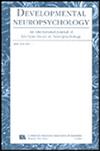关键项目分析提高了逻辑记忆识别试验的分类准确性。
IF 2.2
4区 心理学
Q3 PSYCHOLOGY
Developmental Neuropsychology
Pub Date : 2021-08-01
Epub Date: 2021-09-16
DOI:10.1080/87565641.2021.1956499
引用次数: 12
摘要
目的:重复先前对逻辑记忆识别(LMRecog)的研究,并进行关键项目分析。方法:采用心理测量学方法对213名成人的混合临床样本进行效能效度分析。计算了lmrecognition和9个关键项目(CR-9)的分类。结果:LMRecog≤20具有良好的敏感性(0.30 ~ 0.35)和特异性(0.89 ~ 0.90)。CR-9≥5和≥6的分类准确率相当。CR-9≥5比LMRecog≤20敏感性提高4%;CR-9≥6比LMRecog≤20特异性提高6-8%;CR-9≥7使特异性增加8-15%。结论:关键项分析提高了最佳LMRecog截止点(≤20)的分类准确率。本文章由计算机程序翻译,如有差异,请以英文原文为准。
Critical Item Analysis Enhances the Classification Accuracy of the Logical Memory Recognition Trial as a Performance Validity Indicator.
Objective: : Replicate previous research on Logical Memory Recognition (LMRecog) and perform a critical item analysis.
Method: : Performance validity was psychometrically operationalized in a mixed clinical sample of 213 adults. Classification of the LMRecog and nine critical items (CR-9) was computed.
Results: : LMRecog ≤20 produced a good combination of sensitivity (.30-.35) and specificity (.89-.90). CR-9 ≥5 and ≥6 had comparable classification accuracy. CR-9 ≥5 increased sensitivity by 4% over LMRecog ≤20; CR-9 ≥6 increased specificity by 6-8% over LMRecog ≤20; CR-9 ≥7 increased specificity by 8-15%.
Conclusions: : Critical item analysis enhances the classification accuracy of the optimal LMRecog cutoff (≤20).
求助全文
通过发布文献求助,成功后即可免费获取论文全文。
去求助
来源期刊
CiteScore
2.80
自引率
6.70%
发文量
17
审稿时长
>12 weeks
期刊介绍:
Devoted to exploring relationships between brain and behavior across the life span, Developmental Neuropsychology publishes scholarly papers on the appearance and development of behavioral functions, such as language, perception, and social, motivational and cognitive processes as they relate to brain functions and structures. Appropriate subjects include studies of changes in cognitive function—brain structure relationships across a time period, early cognitive behaviors in normal and brain-damaged children, plasticity and recovery of function after early brain damage, the development of complex cognitive and motor skills, and specific and nonspecific disturbances, such as learning disabilities, mental retardation, schizophrenia, stuttering, and developmental aphasia. In the gerontologic areas, relevant subjects include neuropsychological analyses of normal age-related changes in brain and behavioral functions, such as sensory, motor, cognitive, and adaptive abilities; studies of age-related diseases of the nervous system; and recovery of function in later life.
Empirical studies, research reviews, case reports, critical commentaries, and book reviews are featured in each issue. By publishing both basic and clinical studies of the developing and aging brain, the journal encourages additional scholarly work that advances understanding of the field of lifespan developmental neuropsychology.

 求助内容:
求助内容: 应助结果提醒方式:
应助结果提醒方式:


